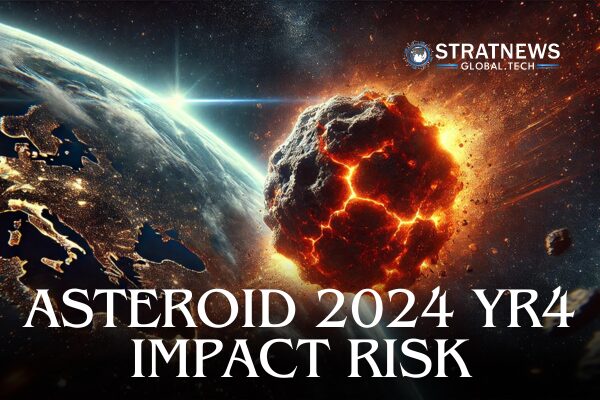Astronomers Lower Impact Risk for Asteroid 2024 YR4
New observations of a small asteroid, first discovered in December, have significantly reduced the likelihood of it striking Earth. Initially, astronomers estimated a 3% chance of asteroid 2024 YR4 impact in 2032, the highest ever recorded for an object of its size. However, updated data from the European Southern Observatory (ESO) and other research facilities show the risk has dropped to nearly zero.
New Data Sharply Lowers Risk
The asteroid, named 2024 YR4, measures between 130 and 300 feet (40–90 meters) across. It follows an orbit that will bring it close to Earth in 2032. Earlier calculations raised concerns about a potential collision, but refined data from ESO’s Very Large Telescope in Chile and other observatories have provided a clearer trajectory.
According to the European Space Agency’s (ESA) Near-Earth Objects Coordination Centre, the impact probability has now fallen to 0.001%. NASA’s Jet Propulsion Laboratory (JPL) estimates the probability at 0.004%. This dramatic reduction means the asteroid poses virtually no threat to Earth.
“The risk is plummeting,” said Olivier Hainaut, an astronomer with ESO in Germany. However, NASA has estimated a 1.7% chance of YR4 striking the Moon.
Potential Impact and Historical Context
If an asteroid like YR4 were to hit Earth, it could cause regional devastation. Hainaut noted that even a 10-meter (33-foot) asteroid could release energy equivalent to the Hiroshima bomb. An impact by YR4 would be approximately 500 times more powerful, potentially affecting an entire city-wide area. However, most of its energy would likely dissipate in the upper atmosphere, reducing the damage on the ground.
Throughout history, asteroid impacts have had catastrophic effects. The most famous example is the Chicxulub asteroid, which struck off the coast of Mexico’s Yucatán Peninsula 66 million years ago. Measuring between 6 and 9 miles (10–15 km) wide, it wiped out about 75% of Earth’s species, including the dinosaurs.
Advancements in Planetary Defense
NASA and other space agencies have been developing ways to protect Earth from potential asteroid collisions. In 2022, NASA’s DART (Double Asteroid Redirection Test) mission successfully altered the orbit of the asteroid Dimorphos. This experiment demonstrated that deflecting hazardous asteroids could be a viable planetary defense strategy.
Astronomers are also closely studying asteroids to understand their composition and potential risks. In 2020, NASA’s OSIRIS-REx spacecraft collected samples from the asteroid Bennu, which contained chemical building blocks of life. Bennu, about 500 meters (0.3 miles) in diameter, has a 1-in-2,700 chance of striking Earth in 2182. If it did, it could release 100–400 million tons of dust into the atmosphere, disrupting the climate and photosynthesis for years.
The latest findings on 2024 YR4 highlight the importance of continued asteroid monitoring and planetary defense research, ensuring that any future threats can be accurately assessed and, if necessary, mitigated.
With inputs from Reuters


